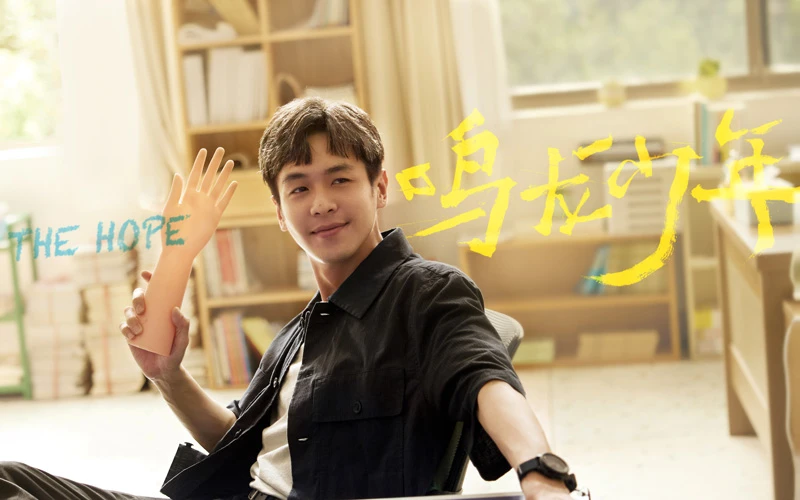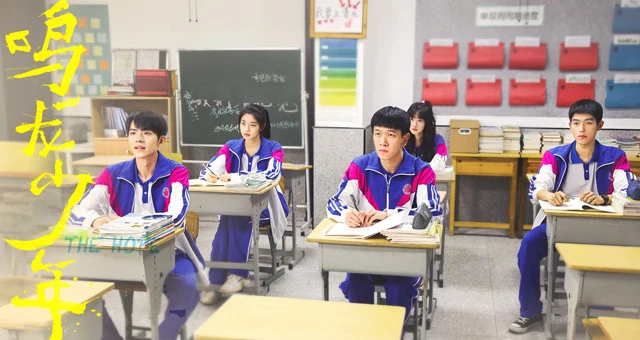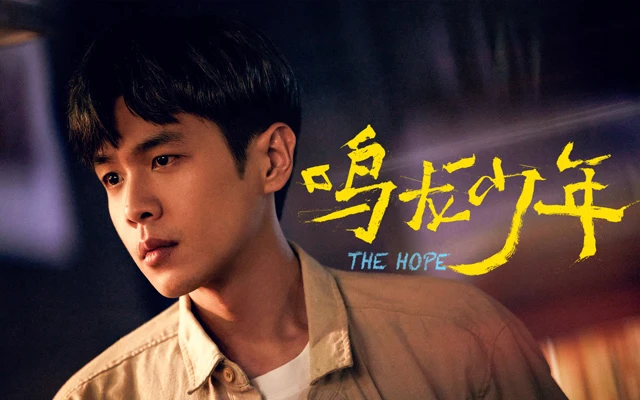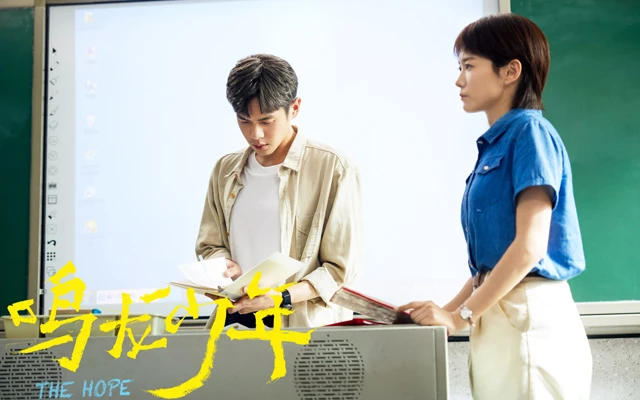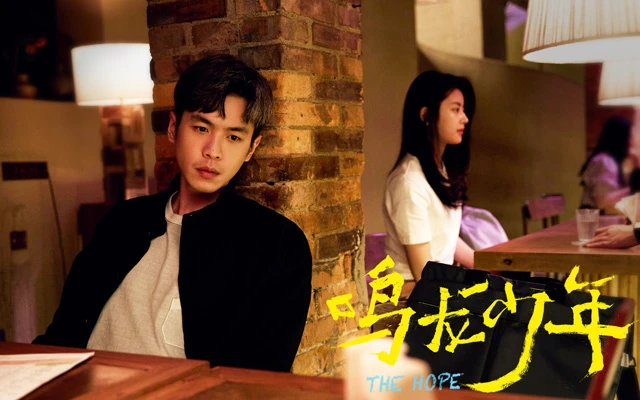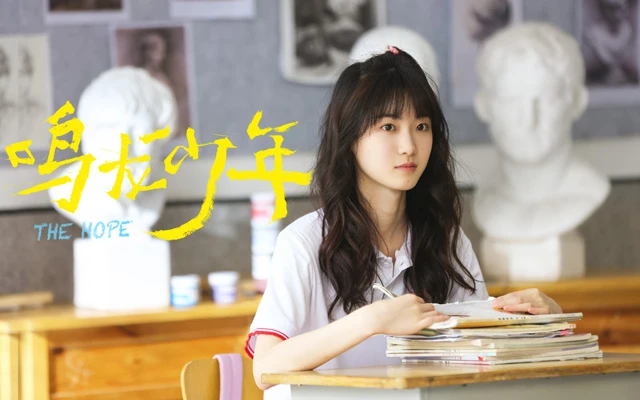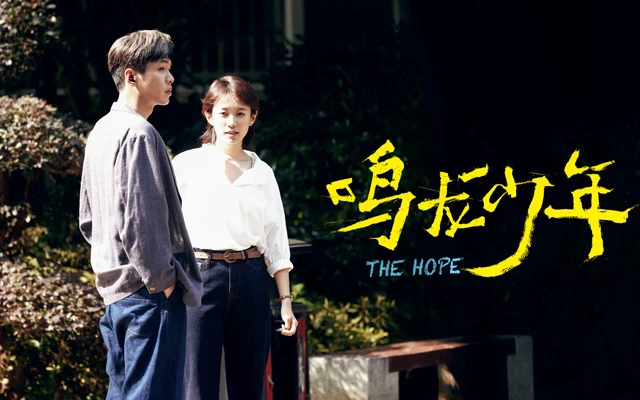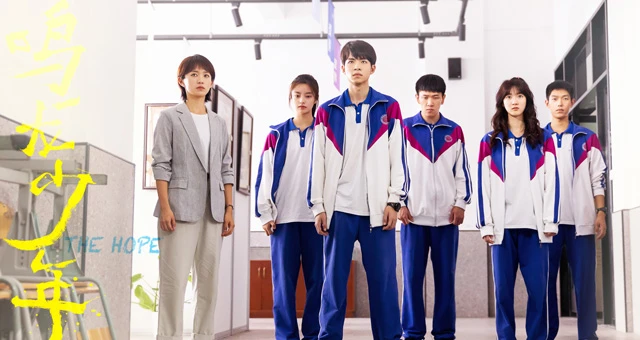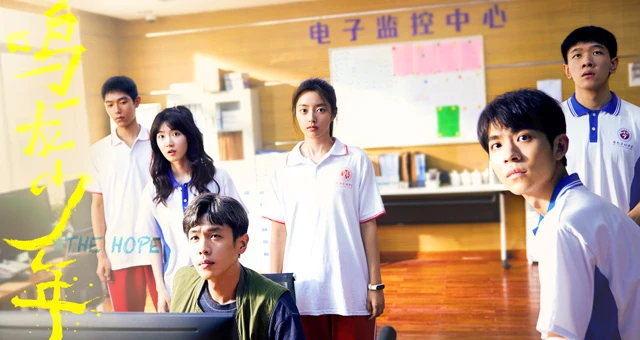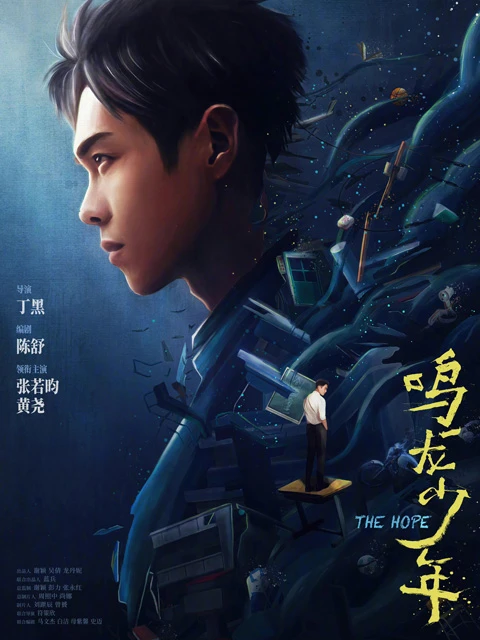Directed by Ding Hei, starring Zhang Ruoyun and Huang Yao, the drama "The Hope (鸣龙少年, Ming Long Shao Nian)" has sparked a perceptual advancement in the minds of the audience since its premiere on Youku. In the first episode, in a unique form of social news, it was revealed that "Ming Long (鸣龙)" is the new name of the merged schools "Ming Ying (鸣英)" and "Long Hai (龙海)".
After watching the process of the formation of Class 11 in the first five episodes, the audience immediately perceives that the significance of the word "Ming Long" goes beyond being just a school name. It symbolizes the voice of the suppressed, unheard, and unseen youth. This sense of advancement is also a shared experience among the audience while following the drama. Whether it is the plot or the characters, the reality-based core or the cinematic quality, "The Hope" is not presented all at once, but emerges layer by layer. As the audience continues to watch, each episode becomes more profound and immersive.
This is related to the creative process of the drama. The creative team conducted extensive research and on-site investigations of real-life events before writing the script and shooting, and then condensed the massive amount of material to the utmost. This has pushed the characters to the extreme. It can be seen that during the research process, the creators did not burden themselves with the expectations of a specific genre, nor did they select material based on genre. The genre and elements are incidental to these authentic materials. The multidimensional and diversified experience of the audience in terms of genre and elements is brought about by the complexity of the characters.
Therefore, "The Hope" cannot be simply labeled as a "youth drama" or a "school drama". The original intention of the creators was not to cater to the expectations of genre-specific audiences, but to provoke collective thinking through the convergence of extreme reality. By breaking through the limitations of genre, the audience expands from young people to the entire population. Audiences of different age groups are eagerly anticipating the portrayal of the ensemble in the subsequent episodes of "The Hope".
Multiple layers of reality highlight human concerns
Realism is the core of "The Hope", not just a superficial aspect. There are so many high school students taking the college entrance examination in China that even a documentary would struggle to cover all of them comprehensively. The series uses the setting of teaching experiment, which is not so common, to condense the most representative real materials, which is actually the most prominent manifestation of the spirit of realism.
"The transformation of an underachieving student who couldn't even reach the cutoff line for a second-tier university into being admitted to a prestigious university after a year of special training" may sound somewhat unrealistic, even comparable to a deceptive weight loss advertisement in the eyes of Sang Xia (Huang Yao). However, if the audience carefully observes the three criteria proposed by class teacher Lei Ming (Zhang Ruoyun) when selecting students, they will find that the five students who later joined Class 11 possess the potential to make a comeback within a year.
Lei Ming is not a supernatural being, and his energy and abilities are limited. One year is not a long time. What he can do is not to guarantee that every fool's dream will come true, but to help those youths who have been trapped in various predicaments and have strayed from their bright future, to get back on track, to let those imprisoned dragons roar freely.
Li Ran (Wang Qiang), Cheng Yushan (Xu Ruohan), Yu Yang (Zhang Chen), Bian Xiaoxiao (Zeng Youzhen), and Jiang Qinglang (Xu Qijie), the five students who joined Class 11, are not singular representatives of reality but complex and mixed representatives. The series presents their real-life problems in distinct layers. Lei Ming and Sang Xia's understanding of them also deepens layer by layer.
Lei Ming initially encountered Cheng Yushan by chance in society. Concerned about her safety upon seeing her wearing Longhai's school uniform, Lei Ming eavesdropped on her conversation with her date to ensure everything was fine. Only after confirming that Cheng Yushan's level was higher than her date's, Lei Ming felt relieved. At this point, Lei Ming and the audience's understanding of Cheng Yushan was limited to her desire to escape her family through finding a partner. The specific difficulties Cheng Yushan faced in her family life are still unknown.
The problem-solving approach provides immediate satisfaction. "The Hope" abandons this direct approach, and each character is multilayered. Lei Ming and Sang Xia visit Cheng Yushan's home and, through visual observation alone, gain further insight into her predicament. Just like Lei Ming and the audience, who initially thought Cheng Yushan simply lacked a quiet study environment and shifted their focus to the next potential student, the true danger in Cheng Yushan's life is only revealed when her stepfather's hidden surveillance cameras in her room are discovered. Thus, Cheng Yushan's reality-based predicament takes a leap to the extreme.
As the drama gradually reveals the complex real-life predicaments of the students, the profound human concerns are highlighted. Class 11 not only has an educational prodigy like Lei Ming but also a psychologist like Sang Xia. Sang Xia chats with Cheng Yushan on the rooftop, attempting to alleviate the tears that the girl can no longer hold back. Throughout the conversation, Sang Xia never asks Cheng Yushan about the specific problem, and Cheng Yushan never opens up about her own situation. Using her own experiences as a starting point, Sang Xia offers various assumptions and assures Cheng Yushan that "it's not your fault".
This is the concern that regards students as human beings - I am not prying into your personal experiences, nor am I a tool to solve your problems. Whatever you are facing, I will support you, encourage you, and help you. In contrast, Tongnian Yu Yang originally had a language barrier but was only considered by teachers and classmates as being unfamiliar with Mandarin. This kind of concern and encouragement is superficial, not addressing the root cause, and can easily backfire. By layering multiple real-life problems onto a student, the teachers' concern goes deeper into the psychological level. This has already gone beyond the realm of school and youth dramas and has a broader perspective on reality.
Presenting pain is to present hope
Although the story of a counterattack is always passionate at its core, the characters in "The Hope" are not too childish. The strong realism of this drama is not based on how common and widespread students' family problems are, but rather on the fact that the perspectives of the characters in the drama are calm and realistic. At first, both Sang Xia and Director Xiao (Kong Lianshun) did not have high hopes for Lei Ming's teaching experiment. They were not looking for trouble, but rather based on their own experiences. Sang Xia has knowledge of psychology and, with a simple analysis, concluded that Lei Ming has a slight antisocial personality characterized by "being self-centered," "not following rules," "making rash judgments," "being narcissistic and arrogant," and "having an inflated sense of superiority."
When Director Xiao analyzed the feasibility of the experiment for Class 11 of the third year, he not only deceived the students but also insulted the teachers. Among the five students in Class 11, two of them (Bian Xiaoxiao and Jiang Qinglang) enrolled with their own ulterior motives.
These calm perspectives of onlookers are embedded in the objectivity and restraint of the entire drama. The exploration of the root causes of students' poor academic performance in the series is also based on objectivity and restraint. The family problems of the five students are heartbreaking, and these are issues that they cannot directly solve at their age. However, the drama does not simply present pain, but rather presents hope through the power of unity. The English title of this drama, "The Hope," precisely represents this hope. The five students in Class 11 of the third year are all temporarily suppressed hopes. What Lei Ming and Sang Xia did was to uncover the pain that was covering their hopes and let the light of hope shine into their lives.
From the details, we can see that before entering Class 11, they never gave up their struggle against their fate. Li Ran's family had poor financial conditions, so he tried to work and earn money on his own; Cheng Yushan, upon discovering the hidden camera, immediately tried to expose it to the world; Yu Yang used detailed notes to distance himself from the mocking; Bian Xiaoxiao, who was dependent on others, developed a pleasing personality; Jiang Qinglang, in order to meet his controlling mother's expectations for his grades, became a master of cheating. However, their individual efforts could not solve the fundamental problem, they were just forced to fight back. Lei Ming's appearance gave them the opportunity to turn defense into offense.
In a diagnostic test, Lei Ming was able to discern each student's character weaknesses from their answering methods. His concept of "academic power" is a highly combative weapon. It can be seen that Lei Ming's strategy is precise targeting. Only by dismantling the different shackles on them can they truly soar, also shows the audience a new power - the power of unity. The unity of Class 11 is the hope of reclaiming their respective glory.
Visuals quality & script delves
"The Hope" gives off a strong film-like quality, and the creators have made many efforts to enhance the immersive experience. In terms of camera usage, there are many clever camera angles. For example, when Cheng Yushan discovers the hidden camera, she conducts a search in her room. According to logic, if she doesn't find any other cameras, both the audience and the character's tension should dissipate. However, this drama maintains the sense of threatened fear, thanks to two clever camera angles.
During Cheng Yushan's search, there are two camera angles, one slightly higher than normal and one slightly lower than normal. The composition is similar to the camera angle of the camera, but without the black border of the previous camera angle. It leaves a suspenseful feeling of uncertainty. In addition to the clever camera angles, the composition also often implies the relationship between characters. For example, Li Ran and Cheng Yushan have two shots where they stand facing each other. The positions of the characters in the frame are almost the same, only the left and right areas are switched. This is an indication that their destinies are about to intertwine.
The use of mirrors also appears twice. One is between Li Ran and Shen Yao (played by Li Mingde), and the other is between Bian Xiaoxiao and Jiang Qinglang. Mirrors can divide a world and also merge two worlds. When their reflections appear in the same mirror, it inevitably creates complex entanglements.
In addition, the creators often follow a shot of a character with a shot of an object. In other words, through the continuity or movement of the shots, a connection is established between a character and an object, laying the groundwork for subsequent plot developments. For example, when Shen Yao goes on stage to receive the scholarship, he glances at the broken mirror piled up in the corner. The sharp edges of the broken mirror leave the audience with an uncomfortable feeling.
In a scene where Lei Ming is playing a game at home at night, the camera eventually pans to the medicine bottle placed on the cabinet behind him. Although the audience cannot see the name of the medicine, they can see words like "anxiety" and "insomnia" in the indications. Combined with the frequent mention of "Zhi Xiang" in the plot, it arouses the audience's interest in Lei Ming's past experiences.
The screenwriter of this drama, Chen Shu, is not a traditional TV drama screenwriter. Her representative works are suspenseful movies such as "Brotherhood of Blades" and "A Writer's Odyssey". Therefore, the film-like quality of "The Hope" is not limited to its audiovisual expression but is also reflected in the script. The second and third episodes focus on Li Ran and Cheng Yushan respectively, but the progression of the plot actually follows the parallel stories of the two students. The fourth episode, "Two-Faced," tells the stories of Bian Xiaoxiao and Jiang Qinglang simultaneously.
Although it often involves dual narrative lines, it does not feel chaotic or disjointed. The creators firmly grasp the rhythm and corresponding characters between the dual narratives, forming a collective emotional rendering and thematic expression. The independent segments or mini-plays at the beginning of each episode either organically complement the main storyline or introduce the theme of the episode, giving each episode the feeling of watching a movie. Especially in the third episode, a reversal of the surveillance target is set at the end, which is refreshing and memorable.
"The Hope" has showcased its unique style in terms of story, characters, and audiovisual elements from the early episodes. Based on realism, it sparks profound discussions on various topics, breaking the boundaries of genres. The authentic material obtained from research shines brightly, creating compelling characters and sharp expressions. It is a truly popular realistic drama.
